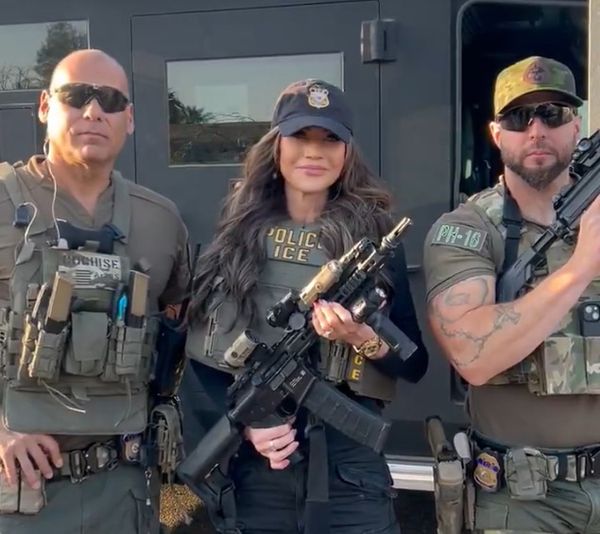
On December 6, 1964, Americans settled down in front of their televisions for what they didn’t know would become an essential part of holiday culture. Animated holiday specials were nothing new, but this was something a little different, something a little weird.
Rankin/Bass Productions hired a Japanese animation studio to produce an adaptation of the classic Christmas song “Rudolph the Red-Nosed Reindeer” using a revolutionary technique called “Animagic”, a form of stop-motion photography in which figures made of wood and plastic are photographed one frame at a time. The results were odd, jerky, some might even say creepy. Yet, it’s a look that has become as essential to Christmas in America as presents under the tree, ugly sweaters and dads falling asleep in the middle of the afternoon.
By the time Christmas 1970 rolled around, the Rankin/Bass Christmas specials were already a staple of ABC’s holiday lineup. Their newest special was an adaptation of the Depression-era classic “Santa Claus is Comin’ to Town”, a pretty straightforward song laying out the rules of how Santa Claus works for children who ask too many questions.
How, you may be asking, did the filmmakers turn this two-minute song into a 51-minute feature-length film? By taking every word and line of this simple children’s song and interpreting it into a piece of lore so obscure it would make even the most hardcore comic book fan’s head spin. It makes perfect sense, if you think about it. On a literary level, Santa Claus is ultimately a superhero, a mythical demi-god. And while this film at times makes you feel like you’re watching Looney Tunes after ingesting hallucinogens, it reveals a lot about the world it comes from. Watching Santa Claus is Comin’ to Town, you can’t help but see a connection between the Depression-era America that inspired it, the global paranoia of the 1970s, and whatever the hell this is that we’re living through now.
Get in the sled, losers. We’re doing film analysis.
You Better Watch Out
Right out of the gate, this movie leaves you wondering whether you are watching the wrong channel. We open with an old-fashioned newsreel announcing that children around the world are preparing for the arrival of Santa Claus. There’s a grim seriousness that lets us know this movie is not transporting us to a world of fairy tales and fantasy. This is very much the world that we know, the world where serious and scary news is announced on our TV’s every single day.
Next, we’re introduced to a somewhat mysterious postman, S.D. Kluger, voiced by Fred Astaire, who immediately commits several felonies by opening letters to Santa written by children from around the world. Kluger decides to take the opportunity to explain just who it is that he’s delivering these letters to and how he came to be the Santa we know today.
There have been many depictions of Santa on film, most filled with magical elves and flying reindeer, sparkling sleighs, and a warm, inviting workshop at the North Pole. That’s not the world Kluger drops us into. Instead, our story is set in Sombertown, a gloomy city ruled by a central-European fascist dictator with the phenomenal name of Burgermeister Meisterburger. Because this is the mythology/superhero version of Santa, he has to have his Moses-like origin story, which in this case means he’s an abandoned orphan left at the doorstep of the Burgermeister who, of course, wants nothing to do with him. His hilariously wormy little lieutenant abandons the baby to die in the woods (children’s television, folks!) before he is rescued by the mysterious Kringle family.

The Kringles are elves, but more importantly, they are workers. They spend each day tirelessly working to make beautiful toys for the children of Sombertown, not at the behest of a boss or to become wealthy, but simply because they love doing it. This version of Santa Claus could have been raised as a landed aristocrat, but instead wound up as a humble hero of the proletariat.
You Better Not Cry
Things get worse in Sombertown when the Burgermeister decides to ban toys. This decision is couched as a security measure by the Burgermeister but in fact happens because he is humiliated after injuring himself stepping on a toy. It’s hard to think of a real-life wealthy member of the ruling class arbitrarily issuing oppressive rules because he got publicly owned and no one respects him, but you’ll have to try and use your imaginations.
Santa and the Kringles are not deterred by this ruling and decide to subvert the new law and smuggle toys into Sombertown. All doors and windows are ordered to be locked but as is always the case with revolutionary people and ideas, Santa finds a way in. The Burgermeister continues raiding homes looking for toys but Santa keeps finding ways to counter every attack, hiding the toys in drying socks over the fire. The Burgermeister acts with urgency, but true power doesn’t panic and Santa acts with patience and persistence.
You Better Not Pout
There are numerous side characters and subplots worth mentioning because they represent another aspect of subverting an oppressive regime: defiant joy. In a world where those in charge depend on hopelessness, finding joy and optimism is an act of revolution, and the radical Santa we see in this movie is fully aware of this.
During one of his trips to town, Santa encounters the Winter Warlock, an elderly wizard who is feared by everyone in town and no longer knows how to have a functioning relationship with another human being. He tells Santa he would like to rejoin society again but simply doesn’t know how to start, triggering one of the movie’s best musical numbers. “Put One Foot in Front of the Other” emphasizes that big changes can happen with patience and persistence, a running theme throughout this movie.
Later, Santa encounters Miss Jessica, a teacher in Sombertown who has essentially accepted her fate under the fascist rule of the Burgermeister. Like the Winter Warlock, Jessica’s encounter with Santa leaves her questioning her assumptions and leads to an extremely trippy musical number, perhaps mirroring the mind-altering nature of watching someone else prove your assumptions about the world have been wrong.
I’m Telling You Why!
Am I reading too much into this movie? Of course I am, because my brain is poisoned by Twitter and I can’t do anything normal like watch a stop-motion Christmas movie without drawing parallels to late-stage capitalism. But also, I don’t think we put things in our movies and music and books accidentally.
“Santa Claus is Comin’ to Town” is a song that was written in the midst of the Great Depression and included some extra verses we don’t typically hear today that focused on helping those in need and giving to charity. Rankin/Bass made this film in 1970, a moment when people around the world were fearful of their own leaders: men with huge egos whose arbitrary decisions could wind up causing misery and death for millions. It was a situation that felt like it might never end. But as we know with hindsight, some things did get better, and some of it did end. With patience, persistence, and commitment to the values you believe in, change can happen.
“Santa Claus is Comin’ to Town” reminds us that in tough times, we don’t need to pout. Stand up to bullies, work to help the people who need us, and keep putting one foot in front of the other.







